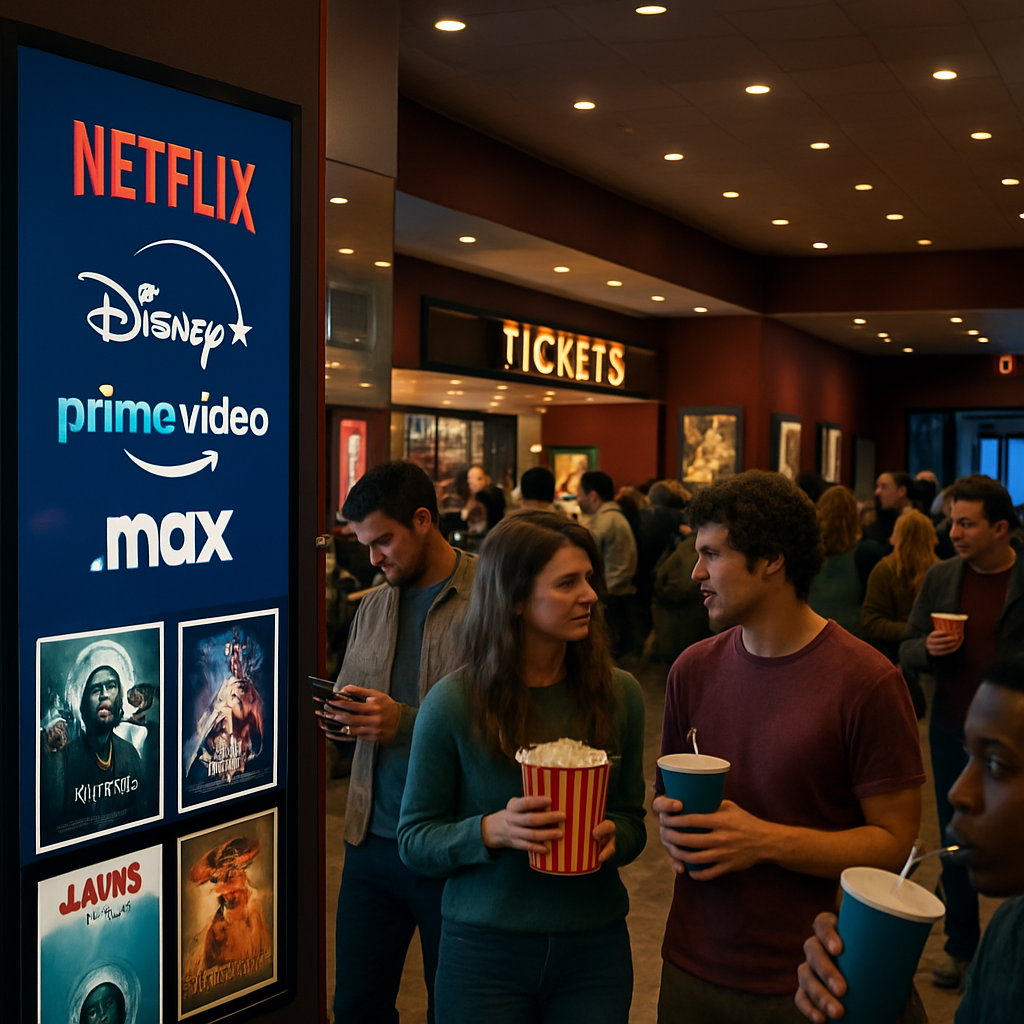
Streaming platforms have been on quite the ride, haven’t they? It feels like just yesterday that popping a DVD into the player was the height of convenience. Now, we’re spoiled for choice, with countless movies and TV shows available at our fingertips, anytime we want. But with this convenience comes an unexpected twist in the narrative: the impact on traditional movie theaters. Let’s explore how streaming platforms have evolved and what they’ve done to the cinema experience we all used to cherish.
The Rise of Streaming Platforms
Remember Netflix’s DVD rental service? I recall the excitement of getting that red envelope in the mail. It was a game changer back then. Fast forward, and Netflix has not only adapted but has become a major player in the streaming world. It wasn’t alone for long, though. Hulu, Amazon Prime Video, and later Disney+, HBO Max, and Apple TV+ joined the scene, each vying for our attention with their unique offerings.
The shift wasn’t just about technology but also about understanding audience behavior. Streaming services tapped into our love for binge-watching, something traditional TV never quite managed to accommodate. We wanted control over what we watched, when we watched it, and how much we consumed in one go. These platforms delivered just that, allowing people to curate their viewing experiences as they pleased.
The Impact on Movie Theaters
While streaming platforms brought films to our couches, movie theaters were left to wonder about their place in this new world. I used to think nothing could compare to the silver screen experience the buttery popcorn, the hush as the lights dimmed, the collective gasp during a plot twist. But now, I’m not so sure. For many, the comfort of watching in pajamas trumps the theater’s grandeur.
Yet not everyone has abandoned the cinema. There’s something irreplaceable about the shared experience of watching a blockbuster in a packed theater. The energy is palpable. The laughter, the gasps, and even the occasional shout from that one person who can’t keep it in these are the things you miss on a sofa binge session.
Theaters have had to innovate to stay relevant. Some have gone the luxury route, installing recliner seats and offering gourmet snacks. Others have embraced technology, with IMAX and 4D screenings that promise to deliver what a home setup simply can’t. But is it enough?
A New Breed of Cinema Experience
For those who haven’t given up on movie theaters, there’s good news. Theaters have found allies in directors and producers who believe their art deserves the big screen treatment. Christopher Nolan, for instance, is a staunch advocate for theatrical releases. In interviews, he’s expressed his belief that the theater experience is integral to the storytelling of films like “Interstellar” and “Dunkirk”.
There’s also a niche resurgence in drive-in theaters, which saw a surprising comeback during the COVID-19 pandemic. Who would’ve thought that the old-school charm of watching a movie from your car would find new life amid social distancing? It’s not the same as a traditional theater, but it offers something unique that streaming can’t replicate.
Challenges and Opportunities
Let’s be honest, streaming isn’t going anywhere. Its convenience is unbeatable, and the pandemic only accelerated its dominance. According to a report by the Motion Picture Association, global online video subscriptions surpassed 1.1 billion in 2020 a staggering number that highlights the shift in consumer habits.
But this isn’t all doom and gloom for theaters. Some films are still made to be seen on the big screen. Remember “Avengers: Endgame”? The communal experience of watching that epic battle scene was electric, and it’s something that home viewings can’t quite match.
Theaters can leverage the nostalgia and unique sensory experiences they offer. Perhaps it’s about creating events rather than just screenings an evening out rather than just a movie. Some theaters have started hosting Q&A sessions with filmmakers, live performances, or even themed nights that create an event-like atmosphere.
The Future of Movies and Streaming
So, where do we go from here? It’s a bit of a guessing game. Streaming platforms continue to invest heavily in original content, pulling in big-name directors and actors. Martin Scorsese’s “The Irishman,” for instance, was a Netflix exclusive, complete with all the cinematic flair you’d expect from a theater release. But it also saw a limited theater release, showing there’s room for both worlds to coexist.
For consumers, this dual approach could be the best of both worlds. Those who value the theater experience can still enjoy it, while those who prefer the convenience of home viewing aren’t left out. It’s about choice something we’ve grown accustomed to in every other area of our lives. Why should movies be any different?
In the end, it might just boil down to personal preference. Some will always prefer the theater for its immersive experience, while others will opt for the convenience of home viewing. Maybe it’s just me, but I find myself caught between the two. I love the thrill of a theater release, but I also enjoy the comfort of my couch and the ability to pause for a snack break.
One thing’s for sure movies aren’t going anywhere. They’re simply adapting to the times, just as they always have. And who knows? Maybe the future holds something even more exciting that neither streaming nor theaters have yet imagined.

